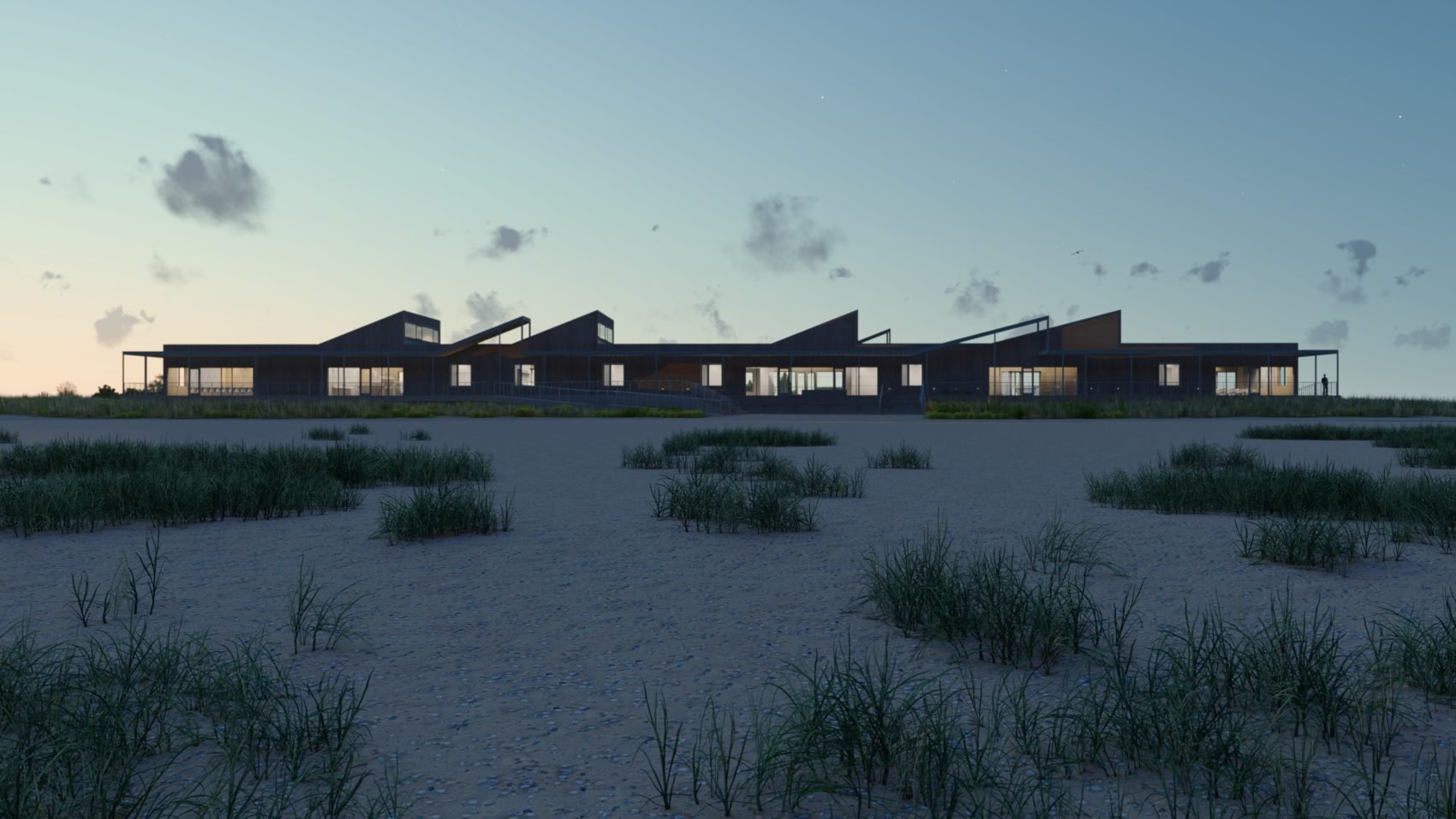Exhibitions
NYS Office of Parks, Recreation, and Historic Preservation (permanent exhibition)
The Jones Beach Energy & Nature Center is a pioneering facility exploring how energy consumption shapes the natural environment.
Located on the West End of Long Island’s iconic Jones Beach State Park, the Center activates the coastal landscape as a living example of these relationships. The net-zero building models how architecture, design, and technology can adapt to a changing environment to meet our energy needs.
Through dynamic and accessible indoor and outdoor exhibits, educational programming, and public events, the Center showcases ways visitors can become conscientious environmental stewards and smart energy consumers.
“Absolutely amazing. A place for inspiration and renewal of ecological appreciation.”
“INCREDIBLE! The JB Energy and Nature Center explains the science and history of energy through beautiful interactive exhibits for children and adults. Located on the west end of Jones Beach, the center overlooks a stunning view of the ocean and dunes. The hospitable and knowledgeable staff offer tours for schools and the general public. This is a Long Island treasure with something for everyone to enjoy.”
New-York Historical Society (March 1-August 4, 2019)
Hudson Rising explores 200 years of ecological change and environmental activism along “the most interesting river in America” through artifacts, media, and celebrated Hudson River School paintings. The exhibition reflects on how human activity has impacted the river and, in turn, how the river environment has shaped industrial development, commerce, tourism, and environmental awareness. The exhibition also explores how experts in various fields are currently creating ways to restore and re-engineer areas of the river in response to climate change.
Reviews
“I highly recommend the current exhibition, Hudson Rising. This is one of the most sophisticated, and yet completely accessible (and fun!) overviews of the relationship between New York City history and the Hudson River that I've ever encountered. The curators are clearly experts who have worked hard to create a visual and experiential journey across time and riverscape that you won't forget. I'm an educator and I've recommended this exhibit to everyone I know who wants to have a great museum experience while learning a lot at the same time. Thank you, NYHS, for this fantastic exhibit!”
— Anne Rademacher, Associate Professor of Environmental Studies and Anthropology, NYU
“I was struck from the opening of the exhibit by the work it does…to solidify the idea of the Anthropocene for me. While this term Anthropocene is frequently evoked, here this concept is concretely illuminated.”
— Kara Schlichting, Assistant Professor of History at Queens College, CUNY and author of New York Recentered: Building the Metropolis From the Shore (University of Chicago Press, 2019). See full exhibition review here.
Dumbarton Oaks (May - August, 2017)
As risks of inundation intensify with climate change, politicians and city planners are looking to land-water edges with renewed interest. Here in Washington, DC, for example, the Georgetown waterfront was recently transformed from a parking lot to a green urban park, while the Anacostia Waterfront Initiative (AWI), launched in 2000, aims to create a lively river edge and restore water quality in the Anacostia area. Despite our present preoccupations, river systems are important not just for ecological but also for economic and cultural reasons. City Water/City Life is an invitation to look afresh at how water continues to shape our urban environment.
MetaLAB (at) Harvard (April 25, 2013)
Whether in architecture, the sciences, social sciences, or urban planning, the View from Above has had a lasting impact on the production of knowledge throughout the twentieth century. Aerial vision has been central to the development of some of the quintessential projects in modernist architecture, such as those initiated by Le Corbusier and, simultaneously, to the social scientific critiques of these design in the 1960s and 1970s. It has led to camouflage in war; new social scientific theories; and has preoccupied the thinking of numerous landscape architects and planners in Europe and America. Networks and Natures MetaLAB – “New Work on Aerial Vision” invites visitors from diverse academic disciplines and the general public to consider the continuing legacy of the view from above.
Curators:
Jeanne Haffner, Lecturer on the History of Science, Harvard University
Sonja Dümpelmann, Harvard University Graduate School of Design
Alex Maclean, Aerial Photographer
Funded by the metaLAB (at) Harvard




